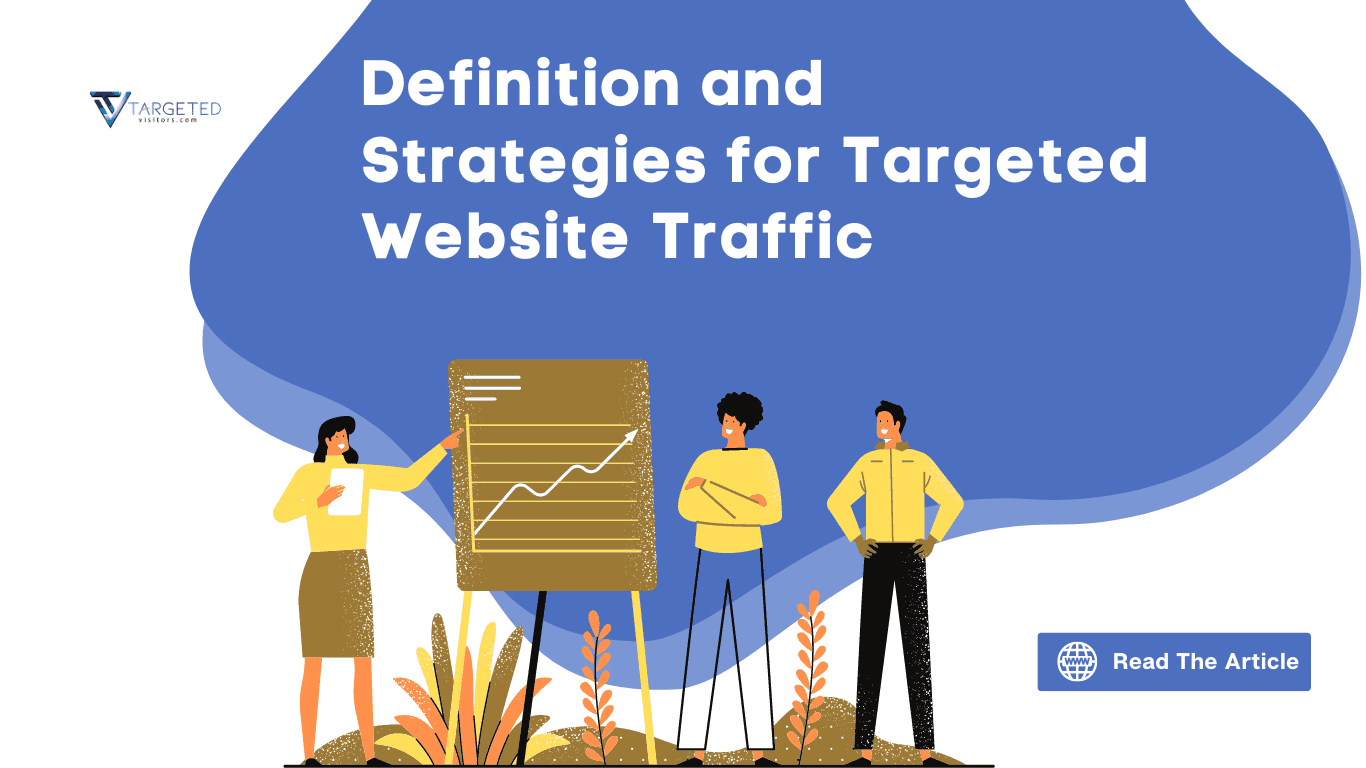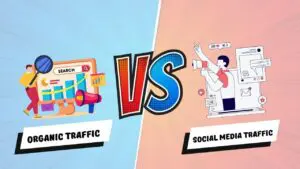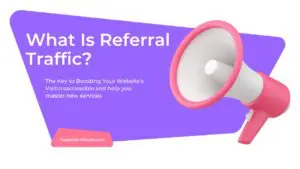In the digital age, driving traffic to your website is critical for success. However, not all traffic is created equal. The true value lies in targeted website traffic (visitors) who are genuinely interested in your products or services.
This article explores what targeted website traffic is and provides detailed strategies to increase it effectively.
Contents
- 1 What is Targeted Website Traffic?
- 2 Importance of Targeted Traffic
- 3 How to Increase Targeted Website Traffic
- 4 2. Optimize for Search Engines (SEO)
- 5 3. Leverage Social Media
- 6 4. Utilize Email Marketing
- 7 5. Implement Content Marketing Strategies
- 8 6. Use Paid Advertising
- 9 7. Engage in Online Communities
- 10 8. Optimize for Local SEO
- 11 9. Collaborate with Other Businesses
- 12 10. Monitor and Analyze Performance
- 13 11. Use Targeted Visitors Platform
What is Targeted Website Traffic?
Geo Targeted website traffic (Visitors) refers to visitors who arrive at your site with a specific interest in what you offer. These visitors are more likely to engage with your content, convert into leads, or make purchases. Unlike general traffic, which can include random or uninterested visitors, targeted traffic consists of individuals who are seeking solutions that your website provides.
Importance of Targeted Traffic
Higher Conversion Rates: Targeted visitors are more likely to take desired actions, such as signing up for a newsletter, downloading a resource, or making a purchase.
Better Engagement: These visitors spend more time on your site, exploring multiple pages and engaging with your content.
Increased ROI: Marketing efforts yield better returns when aimed at an audience already interested in your offerings.
Improved SEO: High engagement and lower bounce rates signal to search engines that your site is valuable, potentially boosting your rankings.
How to Increase Targeted Website Traffic
1. Understand Your Audience
To attract targeted traffic, you must first understand who your ideal visitors are. Create detailed buyer personas that include demographic information, interests, pain points, and online behavior. Tools like Google Analytics, social media insights, and customer surveys can provide valuable data.
2. Optimize for Search Engines (SEO)
Search Engine Optimization (SEO) is a powerful way to attract targeted traffic. Here’s how to optimize your site:
- Keyword Research: Identify and use keywords that your target audience is searching for. Use tools like Google Keyword Planner, Ahrefs, or SEMrush to find relevant keywords.
- On-Page SEO: Optimize your website’s content, meta tags, headers, and images for your chosen keywords. Ensure your site is mobile-friendly and loads quickly.
- Content Creation: Regularly publish high-quality, informative content that addresses your audience’s needs. Use blog posts, videos, infographics, and podcasts to engage different segments of your audience.
- Link Building: Earn backlinks from reputable sites in your industry. Guest blogging, collaborations, and digital PR can help you build a robust backlink profile.
3. Leverage Social Media
How to Drive Traffic from Social Media Platforms to Your Website
Driving traffic from social media platforms to your website is crucial for increasing visibility, engagement, and conversions.
Social media platforms are excellent for driving targeted traffic. Here’s how to use them effectively:
- Choose the Right Platforms: Focus on the platforms where your target audience spends the most time. For example, LinkedIn is ideal for B2B businesses, while Instagram and Pinterest work well for lifestyle and visual brands.
- Engaging Content: Share content that resonates with your audience. Use a mix of posts, stories, videos, and live sessions to keep your audience engaged.
- Paid Advertising: Use targeted ads to reach a specific audience. Platforms like Facebook and Instagram allow you to target users based on demographics, interests, and behaviors.
- Influencer Collaborations: Partner with influencers who have a following that matches your target audience. Influencers can help you reach a larger, more engaged audience.
4. Utilize Email Marketing
Email marketing remains one of the most effective ways to drive targeted traffic. Build and nurture an email list by offering value through newsletters, special offers, and personalized content. Segment your list to send tailored messages to different audience groups.
5. Implement Content Marketing Strategies
Content marketing is about creating valuable content that attracts and retains your target audience. Here are some strategies:
- Blogging: Write blog posts that address the pain points and interests of your audience. Use SEO best practices to ensure your posts rank well in search results.
- Guest Posting: Write articles for other websites in your industry to reach a new audience. Include links back to your site to drive traffic.
- Webinars and Online Events: Host webinars or live Q&A sessions to engage your audience. Promote these events through your website, social media, and email marketing.
- Video Marketing: Create and share videos on platforms like YouTube and Vimeo. Video content can be highly engaging and shareable.
6. Use Paid Advertising
While organic strategies are essential, paid advertising can provide a significant boost in targeted traffic. Consider the following options:
- Google Ads: Run search and display ads targeting specific keywords related to your business.
- Social Media Ads: Platforms like Facebook, Instagram, LinkedIn, and Twitter offer highly targeted ad options.
- Retargeting Ads: Use retargeting to reach visitors who have previously interacted with your website but didn’t convert. Retargeting can help bring them back to your site.
7. Engage in Online Communities
Participating in online forums and communities related to your industry can drive targeted traffic. Share your expertise, answer questions, and provide valuable insights. Include a link to your website in your forum signature or profile.
8. Optimize for Local SEO
If your business serves a local market, optimizing for local SEO can drive highly targeted traffic. Ensure your business is listed on Google My Business, use local keywords, and get reviews from local customers.
9. Collaborate with Other Businesses
Partner with other businesses that complement your offerings. Co-host events, webinars, or create joint content to tap into each other’s audiences.
10. Monitor and Analyze Performance
Regularly review your website traffic and marketing efforts using tools like Google Analytics, SEMrush, and social media insights. Analyze the data to understand what’s working and what’s not, and adjust your strategies accordingly.
11. Use Targeted Visitors Platform
Use platforms like Targeted-Visitors.com to get fast and affordable visitors to your website. These platforms publish ads across their network and partners on the internet to drive real traffic to your site.
This can be an efficient way to increase your site’s visibility and attract visitors who are genuinely interested in your offerings. Additionally, you can buy geo-targeted traffic tailored to specific regions or countries, ensuring that your visitors are not only interested in your products but are also within your operational area.
Choose your preferred geographic locations, set a budget, and let the platform handle the rest. Monitor the results and adjust your campaigns for maximum efficiency.
Conclusion
Driving targeted website traffic requires a strategic approach that combines understanding your audience, optimizing your website, leveraging social media, and using both organic and paid marketing methods. By implementing these detailed strategies, including using targeted visitor platforms like Targeted-Visitors.com, you can attract visitors who are genuinely interested in your offerings, leading to higher engagement, better conversion rates, and sustained business growth.






